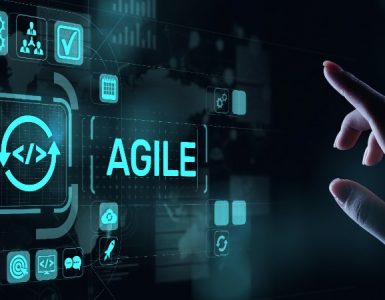Introduction
Scrum and Kanban are two of the most important frameworks in the ever-changing environment of Software development, each offering specific approaches to empower teams, streamline workflows, and deliver value to customers. As organizations across several industries embrace Agile principles, the decision between Scrum and Kanban becomes increasingly important in influencing project success and promoting a culture of continuous improvement. In this detailed article, we will go into the complexities of both frameworks, covering their core concepts, applications, important differences, parallels, and the factors that should be considered when deciding on the best strategy.
What is Scrum?
At its core, Scrum is an Agile framework is a discovery framework which is designed to enable teams to develop, deliver, and sustain complex products effectively. Scrum is most popular and lightweight framework which is used by most of the organizations to tackle challenging and dynamic products or solutions, Scrum embraces the Empiricism which has pillars of transparency, inspection, and adaptation. One of Scrum’s defining features is its seeking frequent and early feedback by encouraging development and review of work in fixed-length timebox called “sprints.” Typically lasting One to maximum four weeks, sprints provide a focused timeframe for teams to collaborate and deliver a potentially shippable increment of the product.
Applications of Scrum
Software development, with applications in a wide range of businesses and fields. Teams working on design projects, research projects, marketing campaigns, and other endeavors have all benefited from Scrum’s structured approach. Scrum enables clear communication, maximizes productivity, and aligns everyone towards common goals by fostering collaboration among developers, product owners, Scrum Master and stakeholders.
What is Kanban?
Originating from Lean manufacturing principles, Kanban takes a different approach to project management. It emphasizes visualizing work on a Kanban board, where tasks are represented as cards moving through different stages of the workflow. Unlike Scrum, Kanban does not enforce fixed iterations or time boxes; instead, it focuses on maintaining a smooth and continuous flow of work, allowing teams to adapt rapidly to changing priorities.
Applications of Kanban
Kanban, which is based on Lean manufacturing concepts, takes a distinct approach to software development. It places an emphasis on visualizing value delivery through various stages of the workflow. Kanban, unlike Scrum, does not impose specific iterations or timeframes; instead, it focuses on maintaining a fluid and continuous flow of work, allowing teams to react quickly to shifting priorities.
Scrum vs. Kanban: Differences
While both Scrum and Kanban are Agile frameworks with shared objectives of delivering value to customers, they possess distinct characteristics that set them apart:
Framework:
– Scrum is distinguished by fixed-length iterations called as sprints with defined goal which serves as scope and timebox, which promotes a consistent rhythm of work and feedback.
– Kanban: Promotes continuous flow by managing flow of work through stages as they are done, allowing for flexibility and fast adaptation to changing demands without any fixed time box.
Roles/ Accountabilities :
– Scrum: Defines specific roles now accountabilities , including Scrum Master, Product Owner, and developers each with known responsibilities, accountabilities and shared goal
– Kanban: Offers more flexibility in roles, typically operating without predefined roles and allowing team members to share responsibilities as needed.
Work Management and Prioritization:
– Scrum: Planning takes place at the start of each sprint, with the goal of delivering the highest-priority items aligning to the goal within the sprint timeframe.
– Kanban: Continuous prioritization, with new work items added based on changing priorities and needs, allowing for quick changes to the workflow.
Work in Progress (WIP) Limits:
– Scrum: Implicit WIP constraints are determined by the team’s ability to accomplish items within the sprint duration, which encourages a focused approach.
– Kanban: Establishes specific WIP limits at each stage of the workflow, preventing team overload and promoting work flow.
Changes and Flexibility:
– Scrum: Encourages stability during the sprint, discouraging changes to the sprint scope once committed, ensuring a consistent development pace.
– Kanban: Emphasizes adaptability and encourages changes at any time, allowing for continuous optimization of flow and seamless adaptation to emerging requirements.
Application and Implementation of Framework:
– Scrum: Scrum needs to be implemented in its entirety. Partial application of Scrum Framework doesn’t call it as Scrum. Scrum is optimal to use in small teams
– Kanban: Kanban framework can be implemented partially and it can applied at individual level as well
Metrics:
-Scrum: Scrum doesn’t have any metrics
– Kanban: Kanban has flow metrics
Similarities between Scrum & Kanban:
While Scrum and Kanban have their own different approaches, they share and rely on common Agile principles that underpin their success:
- Agile Values: Both Scrum and Kanban follow and imbibe Agile Manifesto- Agile values and principles, emphasizing customer collaboration, faster feedback loops, maintaining sustainable pace, embracing changes, and delivering valuable outcomes.
- Pull System: Both Scrum and Kanban encourages pull system meaning the work items are being pulled as and when the team finishes the work based on their capacity.
- Continuous Improvement: Both Scrum and Kanban emphasize constant improvement. Scrum teams do retrospectives at the end of each sprint, whereas Kanban teams examine their workflow on a frequent basis to identify potential for optimization.
- Customer Focus: Customer-centricity is at core of both Scrum and Kanban approaches, ensuring that both frameworks prioritize delivering value to customers through incremental and iterative manner.
What is better: Scrum or Kanban?
The decisions about framework between Scrum and Kanban is not based on which one is better than the other; rather, it depends on the specific context, team dynamics, and project requirements. Consider the various factors when making this decision.
Scrum is best suited for products or solutions with a some visibility and understanding of scope (focused goal) and predictable requirements as compared to Kanban. The fixed-length sprints and defined events give a disciplined method to managing the development process. Scrum’s fixed time boxes may be beneficial for teams with a sustainable workload and delivery constraints.
Kanban works well in contexts where work is subject to rapid adjustments and shifting priorities. The continual flow and adaptability enable teams to respond quickly to altering demands. Kanban is well-suited for teams with varying priorities, as it enables teams to adjust their focus and priorities based on changing demands.
Frequently asked questions
Below are Frequently Asked Questions about Scrum and Kanban:
- What is Scrum, and how does it work?
- What are the key roles in Scrum, and what are their responsibilities?
- How long are Scrum sprints, and why are they important?
- What is a Scrum Master, and what is their primary role in the team?
- What is a Product Owner, and what are their responsibilities?
- How does Scrum promote collaboration among team members?
- What are the advantages of using Scrum in software development?
- Can Scrum be applied in non-software development projects?
- What are the common challenges faced while implementing Scrum, and how can they be addressed?
- What is Kanban, and how does it differ from Scrum?
- How do Kanban boards work, and what are their benefits?
- Can Kanban be used in projects with fixed requirements and deadlines?
- How does Kanban handle changes in priorities and workloads?
- What are the key principles of Kanban that make it effective?
- How can teams set WIP limits in Kanban, and why are they important?
- What is the role of continuous improvement in Kanban?
- Can Kanban be combined with other Agile Frameworks like Scrum (Scrumban)?
- How does Kanban promote flexibility and adaptability in project management?
- What are the main similarities between Scrum and Kanban?
- How do both frameworks align with Agile principles?
- What are the benefits of using visual management in both Scrum and Kanban?
- How do both Scrum and Kanban foster a customer-centric approach?
- What are the common challenges teams may face when transitioning to Agile methodologies?
- Can Scrum and Kanban be used together in the same organization or project?
- How can teams measure the success and effectiveness of Scrum and Kanban implementations?
- What is the role of retrospectives in both Scrum and Kanban?
- How do both frameworks promote continuous learning and improvement?
- Which framework is better suited for projects with evolving requirements?
- What type of projects benefit most from a fixed-length iteration like Scrum?
- How can teams decide whether to adopt Scrum or Kanban for their specific project?
- What are the key factors to consider when choosing between Scrum and Kanban?
- How can organizations ensure a smooth transition when implementing Scrum or Kanban?
- Can Scrum or Kanban be used in non-technical teams like marketing or HR?
- How can teams overcome resistance to change when adopting Agile frameworks?
- What are the recommended resources for further learning about Scrum and Kanban?
Conclusion
Finally, Scrum and Kanban are two powerful Agile frameworks, each with its own set of strengths, practices and applications. The decision to use Scrum or Kanban should be based on your team’s and customer’s specific needs and context. Transparency, collaboration, customer focus, and continuous improvement are the ideas and values that drive both frameworks and are essential for successful Agile implementation. Typically if your teams are starting of with their Agile ways of working then using Scrum becomes easier as the framework is semantic and it comes with its rules and boundaries so the implementation ensures discipline with teams as compared to Kanban which is more of free spirited without much rules.
Having said that, Consider experimenting with both frameworks as you begin your Agile journey to identify which best corresponds with your team’s objectives and organisational culture. The process of determining the most effective technique for your team will pave the way for improved agile transformation. experimenting with both frameworks as you begin your Agile journey to identify which best corresponds with your team’s objectives and organisational culture. The process of determining the most effective technique for your team will pave the way for improved agile transformation.






Add comment